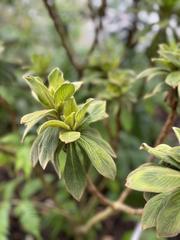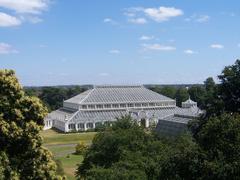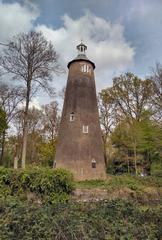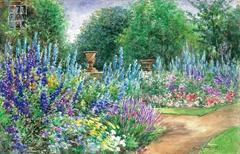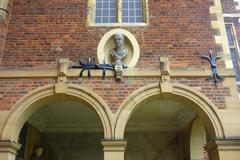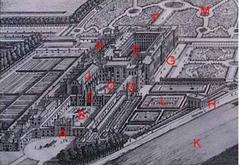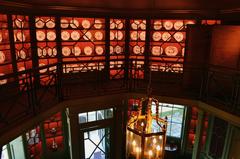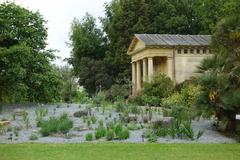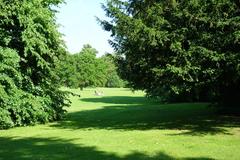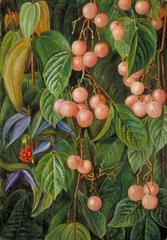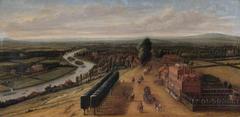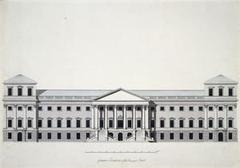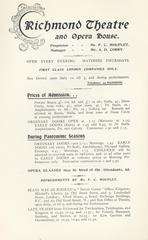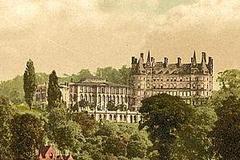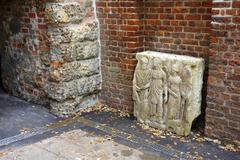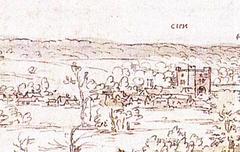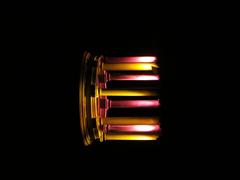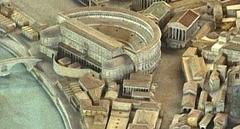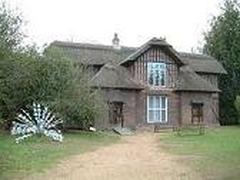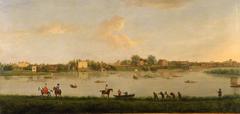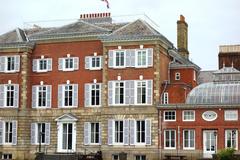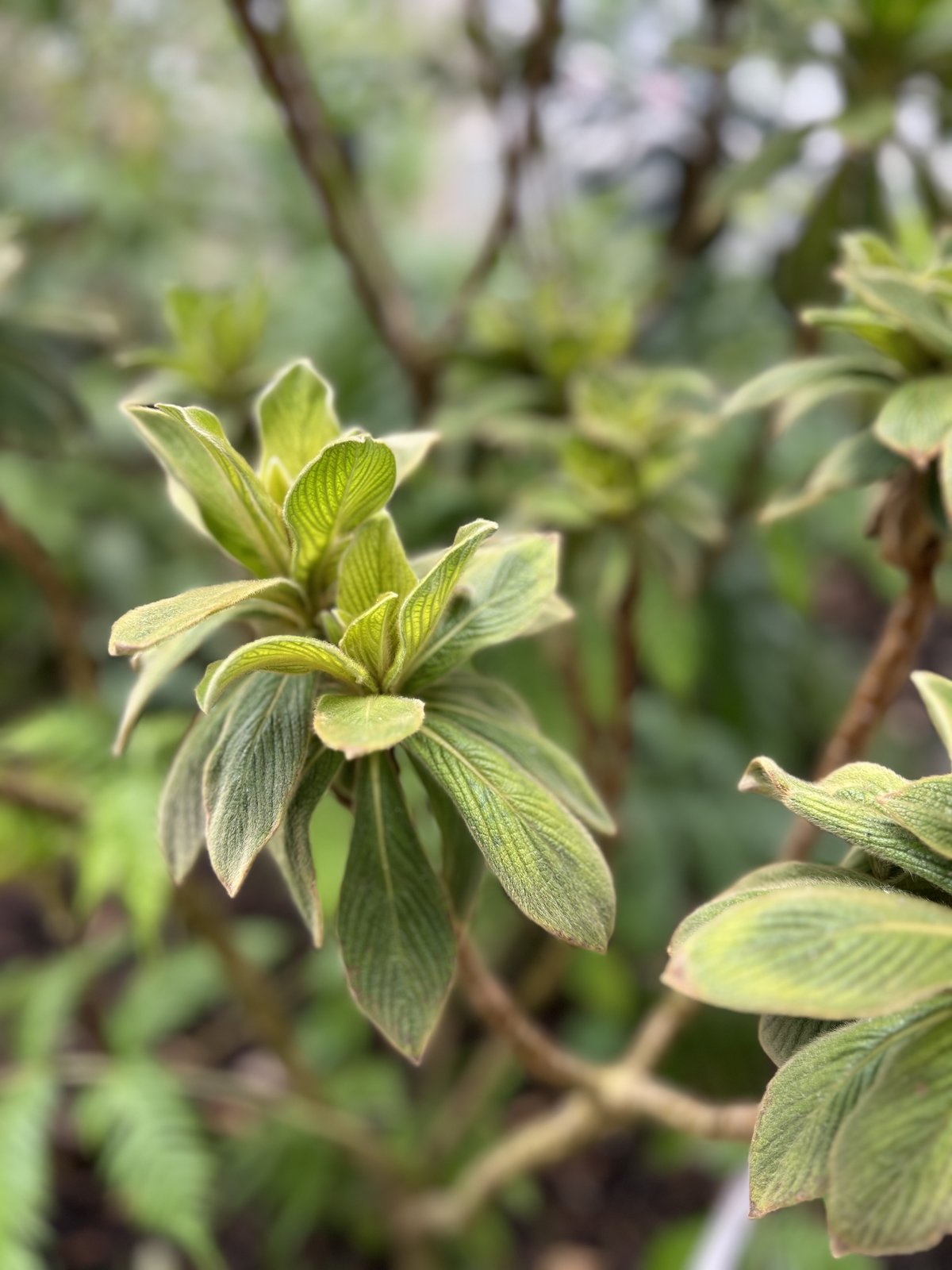
Temperate House Richmond: Visiting Hours, Tickets, and Historical Sites Guide
Date: 03/07/2025
Introduction: The Temperate House at Kew Gardens
Nestled within the lush expanse of Kew Gardens in Richmond, United Kingdom, the Temperate House is celebrated as the world’s largest surviving Victorian glasshouse. This monumental structure harmoniously blends architectural grandeur with a vital role in global plant conservation. Completed in 1863 and designed by Decimus Burton, the Temperate House was built during an era of scientific curiosity and botanical exploration, reflecting the Victorian fascination with nature and technological innovation. Today, it houses over 1,500 species—many of which are rare or extinct in the wild—within its impressive 4,880-square-meter cast iron and glass frame (Design Horizons; Kew Gardens; Headout).
This comprehensive guide provides essential information for planning your visit, including opening hours, ticketing, accessibility, transport, and recommendations for nearby attractions. We also explore the Temperate House’s historic significance, its restoration, and the scientific and educational initiatives that make it a beacon of conservation and learning.
Contents
- Victorian Origins and Architectural Vision
- Cultural Impact and Heritage Significance
- Restoration and Modernization
- Botanical Collections and Conservation
- Visitor Information
- Visiting Hours and Tickets
- Directions and Accessibility
- Facilities and Amenities
- Guided Tours and Public Engagement
- Conservation and Educational Initiatives
- Frequently Asked Questions (FAQ)
- Visual and Media Resources
- Summary and Final Tips
- Sources
Victorian Origins and Architectural Vision
The Temperate House was conceived as an ambitious response to the influx of exotic plant species from across the British Empire. Decimus Burton’s innovative design, constructed between 1859 and 1863, features a cruciform layout, a soaring central nave, and expansive wings—maximizing sunlight and offering optimal conditions for temperate plants. Its ornate cast ironwork and decorative motifs exemplify Victorian craftsmanship, while the use of glass and iron was at the cutting edge of industrial architecture (Design Horizons; Historic England).
Cultural Impact and Heritage Significance
From its opening, the Temperate House symbolized Britain’s scientific advancement and botanical leadership. As a public attraction, it made rare plant specimens accessible to all, nurturing public interest in natural sciences. Its architectural splendor and dedication to plant preservation have earned it a place within the UNESCO World Heritage Site at Kew Gardens (Kew Gardens History; UNESCO World Heritage Centre). The Temperate House has played a pivotal role in advancing horticultural knowledge and remains an icon of Victorian ingenuity.
Restoration and Modernization
By the early 21st century, the Temperate House required a major restoration to address aging infrastructure and modern conservation needs. The 2013–2018 project involved replacing 15,000 glass panes, restoring 69,000 structural elements, and integrating advanced climate control systems to ensure the long-term health of its plant collections (Design Horizons; Londontopia). Accessibility was enhanced with step-free routes and interpretive displays, ensuring the glasshouse remains welcoming for all visitors.
Botanical Collections and Conservation
Diversity and Plant Highlights
The Temperate House is home to over 10,000 individual plants representing 1,500+ species from temperate regions worldwide, including Africa, Australasia, Asia, the Americas, and island ecosystems (World Atlas; Archello). Notable specimens include:
- Chilean Wine Palm (Jubaea chilensis): One of the world’s largest palms, threatened in the wild.
- Yellow Fatu (Abutilon pitcairnense): Extinct in the wild, preserved only in cultivation.
- Encephalartos woodii: A cycad believed extinct in the wild.
- Morrisby’s Gum (Eucalyptus morrisbyi) and Kaka Beak (Clianthus puniceus): Critically endangered species.
Labels and interactive displays inform visitors about each species’ origins, status, and ecological importance (Strawberry Tours).
Conservation Mission
The glasshouse acts as a sanctuary for species at risk due to habitat loss, disease, and climate change. Kew’s horticulturists use seed banking, cuttings, and tissue culture to propagate and protect these plants, supporting global reintroduction and restoration efforts (Kew Gardens). Regular exhibitions, such as “Rare and Extinct,” showcase Kew’s ongoing conservation work.
Visitor Information
Visiting Hours and Tickets
- Hours: Open daily from 10:00 AM to 6:00 PM (last entry at 5:30 PM). Seasonal variations may apply—check the official website before visiting.
- Tickets: Entry to the Temperate House is included with general Kew Gardens admission. Adult tickets start at £20, children (4–15) from £5; discounts for seniors, students, and families available. Book in advance via the official ticketing page.
Directions and Accessibility
- Location: Kew Gardens, Richmond, southwest London.
- Transport: Easily reached via Kew Gardens station (London Overground, District Line), bus, or car (limited parking available).
- Accessibility: The Temperate House is fully accessible, with step-free routes, ramps, and accessible toilets. Assistance dogs welcome; sensory guides and large-print maps available (Kew Gardens).
Facilities and Amenities
- Restrooms and seating: Accessible toilets and ample seating throughout.
- Food and drink: Cafés and picnic areas nearby.
- Shops: Botanical-themed gifts at the main shop.
- Wi-Fi: Complimentary in designated zones.
Guided Tours and Public Engagement
Expert-led tours of the Temperate House explore its architecture, plant collections, and conservation efforts. Educational workshops and interactive displays engage visitors of all ages, fostering appreciation for plant diversity and environmental stewardship. Families and school groups are encouraged to participate in special events and hands-on learning experiences (Kew Gardens).
Conservation and Educational Initiatives
The Temperate House is integral to Kew’s broader mission to halt biodiversity loss and promote sustainable plant use (Kew Gardens London). Apprenticeships and training programs in conservation horticulture ensure the next generation of experts. International collaborations facilitate research, plant exchanges, and global conservation strategies.
Frequently Asked Questions (FAQ)
What are the Temperate House opening hours?
Open daily from 10:00 AM to 6:00 PM (last entry at 5:30 PM). Check the official website for seasonal updates.
Do I need a separate ticket for the Temperate House?
No, entry is included with your Kew Gardens ticket. Book here.
Is the Temperate House wheelchair accessible?
Yes, with step-free paths, ramps, and accessible restrooms.
Are guided tours available?
Yes, inquire at the entrance or check the events calendar.
Can I take photos inside?
Photography for personal use is welcome; tripods and drones are not permitted.
Visual and Media Resources
- High-resolution images of the Temperate House’s exterior and interior, with alt text: “Temperate House glass and iron structure at Kew Gardens”.
- Photos of notable plants like the Chilean wine palm and yellow fatu.
- Maps highlighting the Temperate House within Kew Gardens.
- Virtual tours available via the official Kew Gardens website.
Summary and Final Tips
The Temperate House at Kew Gardens stands as a testament to Victorian innovation, botanical exploration, and the ongoing effort to conserve plant diversity. Its collections, architecture, and educational programs make it a must-visit for families, scholars, and curious travelers alike. Plan ahead by checking hours and ticketing, consider joining a guided tour, and don’t miss nearby Richmond attractions for a full cultural experience.
Stay engaged by downloading the Audiala app for real-time updates, and follow Kew Gardens and Audiala on social media for news on events and exhibitions. For further information, always consult the official Kew Gardens website.
Sources
- Reviving the Temperate House at Kew Gardens, 2018, Design Horizons (Design Horizons)
- Kew Gardens Official Temperate House Information, 2025, Kew Gardens (Kew Gardens)
- Kew Gardens Tickets and Visitor Information, 2025, Kew Gardens (Kew Gardens)
- Kew Gardens History and Collections, 2025, Kew Gardens (Kew Gardens)
- Kew Gardens London – Temperate House, 2025, Headout (Headout)
- Temperate House at Kew Gardens, 2025, Wikipedia (Wikipedia)
- What Is Unique About the Kew Garden’s Temperate House?, 2024, World Atlas (World Atlas)
- Great London Buildings: The Glass Houses at Kew, 2023, Londontopia (Londontopia)
- Kew Gardens Guide, 2025, Secret LDN (Secret LDN)
- The Tourist Checklist: Visiting Kew Gardens, 2024, The Tourist Checklist (The Tourist Checklist)
- Temperate House at Kew Gardens, 2024, Archello (Archello)
- Kew Gardens London About Page, 2024, Kew Gardens London (Kew Gardens London)
